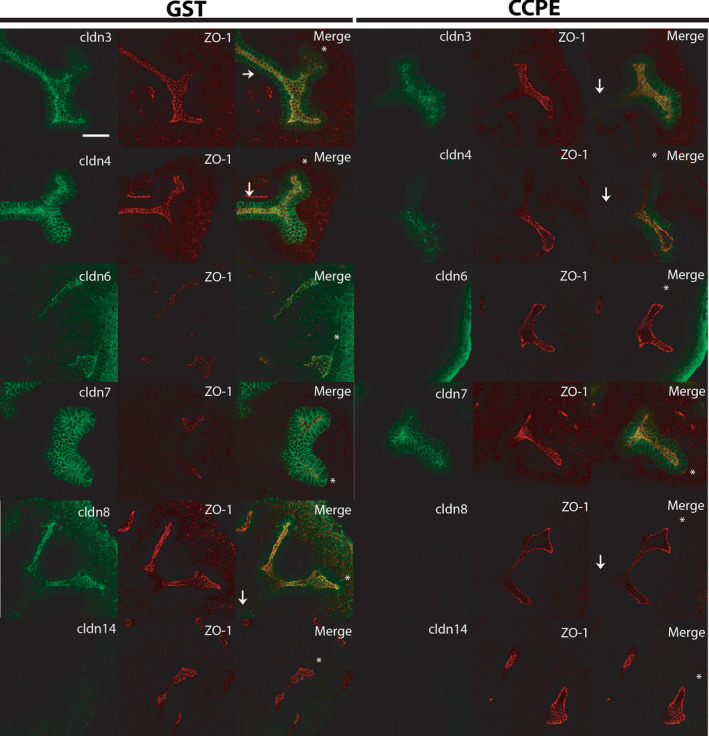FIGURE 3.

C‐CPE Removes C‐CPE‐Sensitive Claudins from Tight Junctions within the Ureteric Bud Lineage and Increases the Lumens of Ureteric Bud Tips. E12 kidney explants were grown in the presence of GST or C‐CPE and then whole mount immunofluorescence was performed to detect the presence of the C‐CPE‐sensitive claudins and the tight junction marker ZO‐1 after 72 hr of culture. Confocal images reveal that explants cultured in the presence of GST exhibit strong expression of CLDN3,‐4,‐6, and −8 within the apical membrane of the ureteric bud trunks and tips and colocalization with ZO‐1. No signal for CLDN14 protein was detected by immunofluorescence. CLDN7 was predominantly expressed in the basolateral membrane and showed poor colocalization with ZO‐1. In the presence of C‐CPE, there was a marked reduction in signal detected for CLDN3 and −4 in the apical membrane and almost no signal detected for CLDN6 and −8. In contrast, there was relatively more apical expression of CLDN7 following treatment with C‐CPE, but poor colocalization with ZO‐1. Representative images are shown from a total of three experiments with n = 3 GST and n = 3 C‐CPE‐treated explants in each experiment. The white asterisk marks ureteric bud tips while the white arrow marks the ureteric trunk in the merge images. Scale bar = 50 μm
